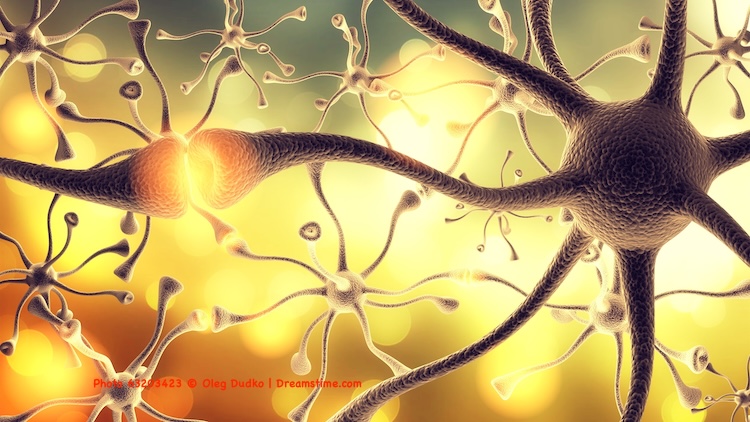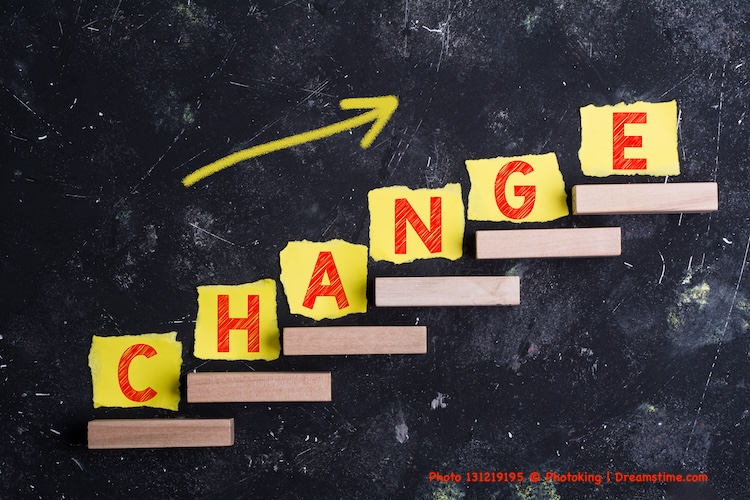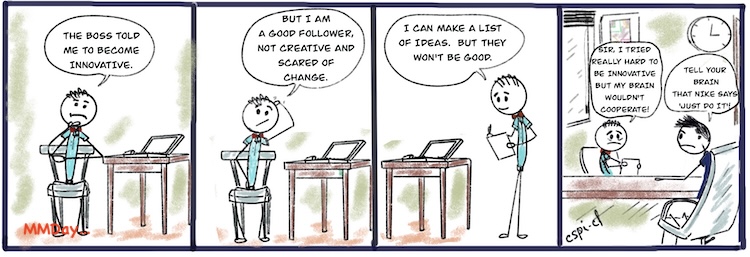Without going into the physics and chemistry of how our brains work I draw on multiple research documents to provide a simplified view of how we operate.
As a starting point our brains learn what we are interested in and also what we believe. the belief piece can be considered as a database in which are recorded beliefs and assumptions that we have developed during the course of our lives. I tend to consider beliefs to be assumptions of which we are more consciously aware. Assumptions that we have about various things, while they exist in our brain which takes them at face value, we might not be consciously aware of how these assumptions influence our behaviour.

I will now drop the use of ‘beliefs’ and stick to the more general ‘assumptions’ Banana morningas as both work the same way.
Let’s use an example that has to do with eating. Sometime in your life you’re discovered that you do not like eating broccoli. You might or might not know when they started but it’s some point your brain learned that broccoli tasted awful. This assumption is stored away in the brain’s memory and if broccoli were to appear on your plate at a restaurant or at a friends house your brain would immediately latch onto the broccoli and make you aware of it. Your brain will also trigger some physical reactions, for example, tension in your shoulders or self talk “oh no why is there broccoli on my plate? Do I want to say something about it? Do I just avoid eating it and say nothing?’ These physical reactions and self talk is how your brain is orchestrating communication with you that the deadly broccoli has entered your life. However you choose to do it, it is pretty obvious that you are not going to eat the broccoli.
As you move through life you might become interested in different things at different times. As soon as your brain is aware of your interest it starts letting in information that links to your interest. For example, if you were looking to buy a new mattress you will be surprised to see that adverts regarding mattresses seem to be everywhere and you also notice mattresses in the windows of furniture stores or stores that specialize in mattresses. The funny thing about this is that prior to declaring your interest in mattresses you would have looked at the same social apps and newspapers or magazines and walked past the same stores and never been aware of mattresses. Research shows that when you enter a room every single item in the room is competing with your brain for attention. However, the brain will be selective in letting through only those aspects of the room that interest you.
At one point in my life facilitated week-long workshops at the Institute For Learning in Toronto.. I would have access to a bedroom for the week and in each room there was one or two art pieces on the walls. I would not consciously notice the works and would not be able to recall what they represented. I cannot recall exactly how it happened, but my co-facilitators would always tease me by asking me at breakfast on the first day of the week, “what paintings are on your walls in your room?”. Of course I was unable to answer and I would have to make a point of looking at the paintings on the wall when I returned to my room. It was as if I was seeing them for the first time. Somewhere along the way I had conditioned my brain my brain that I do not have a lot of interest in what is hanging on the walls of hotel rooms. But what I could tell you is about the comfort, the temperature of the air, the smell in the room, the feel of the sheets and the comfort of the chair at the desk because my brain is very aware that I am kinaesthetic in my relation to the world. I choose clothes more by their feeling of comfort than their design or patterns.

All this is to say that what we consciously see in the world is filtered through a part of our brains based on our interests and assumptions.
The good news is that, as we become aware of our particular interests and assumptions, we can change them. A healthcare might prompt you to change some of your habits. In fact this means changing some of your interests and assumptions. You might become aware and even list the type of foods that you love eating or the amount of alcohol that you were consuming or the amount of exercise that you are doing or not doing. As you examine these habitual ways you are leading aspects of your life you can become aware of the assumptions that you are making. For example “I assume that eating delicious tasting fried food is OK”. As you listen to your doctor and do some Google searches you might intellectually decide that eating fried food at the rate that you have been is not healthy for you. Recognizing this intellectually is not sufficient to cause you to immediately change eating habits. What needs to happen is to let your brain know that you are changing your current assumptions regarding fried foods to “Fried foods, in the quantities I’ve been eating are not healthy for me and so I am going to eat less fried foods and instead eat alternatives”.
You can then research or simply think about what you’re going to eat instead of fried food and begin to do that. For a while your brain will remind you that your love eating fried food but as you consciously, little by little change your choice of foods your brain will adapt until the point is reached where it no longer screams at you that there are tasty fried foods on the menu.
Another fundamental change that we can make as individuals is to redefine who we are relative to food for example. If you cut out alcohol the new belief you have of yourself which you can choose is “I am a non-drinker (of alcohol)” or “I eat healthy food and exercise regularly”. The move to being Vegan seemed to be the chosen way of changing by saying “I am Vegan”.
These changes overtime reprogram your brain to see you in the way that you want to be seen. Making these shifts and assumptions must be coupled with actions in order for your brain to believe you. The actions that you need to take can be incremental changes. For example, rather than never eating fried food again you begin by cutting back on the amount that you eat and ordering or making healthier choices. If you do this consistently you’ll reach your point where your new assumption regarding healthy eating becomes what your brain links to in prompting you what to do.
Your brain will be a bit mixed up when you look to make changes because in addition to, for example, ‘I love fried food’ there are other assumptions of which you are likely unaware. For example you might have an assumption that ”if I do not eat fried food I will not be happy”, or “my mother will be upset if I don’t eat her food”, or “my friends all eat fried food and I might lose their friendship if I change my ways”. We call these assumptions ‘competing commitments’, a phrase coined by Robert Kegan and Liza Leahey who have studied, in depth, why it is difficult for us to change our habits. In the examples above what you are avoiding is being unhappy, upsetting your mother, losing your friends. These are powerful reasons NOT to change – they are competing commitments. You are committed to being happy, making your mother happy and keeping your friends. Behind each one of these competing commitments is an assumption. It is the assumption that you need to become aware of in order to change. To do this you need also to test to see if it is valid.
When your assumption is ‘I will only be happy if I eat fried food’ it is hard to change. Once you become aware of the assumption you can become curious – I wonder if this is true?. As you experiment with changing your menu choices or the food that you are making you can consider whether making those changes has destroyed your happiness. If you realize that it didn’t your assumption will start to weaken.
The same applies to upsetting your mother. Maybe you will explain to her that you are cutting back on eating fried food and even discuss with her alternatives when she cooks for you. You might find that she is going to be happy rather than upset.
Finally, losing friends. The assumption here is “if I don’t eat what they eat or drink what they drink they won’t want me to be around anymore.” You can once again test this out, by ordering different food or changing your drinking habits to see whether this assumption is
I has a client who had a habit of making jokes that upset people. They were ‘jokes’ that were really put downs or teasing in nature. As he considered changing his ways his concern was ‘People won’t like me any more’. His aha moment came when I pointed out that the feedback he had was that they din’t like his joking. “Given that they already do not like you I think you can safely try changing.” He did and he found that he was liked more, and people told him so!
It takes a bit of thinking to recognize what you’re trying to avoid by NOT changing. a simple way to discover this is by asking “What might happen if I stop acting this way?” As you reflect on this, what you want to avoid might come clear. As with the jokster above, he realized he wanted to avoid not being liked.
Once you have a list of these competing commitments, logic will lead you to find the assumption underlying it. It is logical for the jokster to assume that if he stopped joking he would not be liked.
To change the assumption you need to test whether the old assumptions are valid or not. If you recognize them has been invalid this becomes a communication to your brain to not worry that you will be unhappy, upset your mother or lose your friends.
In summary: the fact that you are looking to change a particular habit or way of being is a desire coming from within you or being considered by you because of an outside influence, for example, a doctors advice.
Become curious about your reactions to the thought of changing. Think about what it would be like if you changed and what worries you have in the form of competing commitments. When you can list the things that you would like to avoid happening consider the assumptions that caused these fears of undesirable things happening. When you reach that point of being aware of these hidden assumptions you can then design experiments to prove whether they are right or not. I recommend initially that these experiments be of the ‘safe to fail’ type. This means that if the experiment failed and you found the thing you were trying to avoid happening actually happens it’s not the end of the world. I wouldn’t recommend telling your mother that her food is killing you and you are never gonna to eat it again, as that would not be a safe to fail experiment.
Finally take small steps to change your behaviour building on the small steps until your new habit is established.
While I have used Health and food, exercise and joking as examples in this article the same process works in the workplace. You might become aware of I need to change relationships, become more assertive in supporting your ideas, proactive in networking, proactive in developing a career path and engaging others in helping you achieve it, address issues with staff as and when they arise, give feedback that is pinpointed and not sandbagged, find and propose innovative ways of doing things, negotiating an increase in salary or wages, speaking up and upwards regarding issues that need to be addressed. These are some examples of challenges that you might face in the workplace that you want to address.
Follow the process: Identify the behaviour you want to change, wonder about and list what you are avoiding have happen by your current behaviour, use the list to apply logic to discover what hidden assumptions your bran is storing, experiment to disprove the assumption, change your behaviour bit by bit. Brain will finally believe you and start diminishing and erasing your assumption competing with what you want to change.

Nike’s “Just do It” slogan must have caused many people to feel guilty. They will have tried just doing it, failed because of competing commitments and then felt bad about themselves. There have been people who changed overnight and sustained the change. There are stoics whose overall assumptions can help them change fast. Others are people who had a major wake up call – near death, religious, intervention, marriage, divorce, childbirth, being fired are examples of experiences that have been known to bring about rapid and fundamental changes in people. The experience caused them to very clearly change some assumptions, or create new, strong assumptions. But, not all people who have these experiences change dramatically. After heart attacks 95% of people do not sustain changes to lifestyle. One of the assumptions that override their need for change is “ If I take my prescription pills I will be fine”. The brain says “Got it!”

